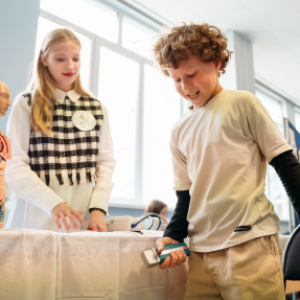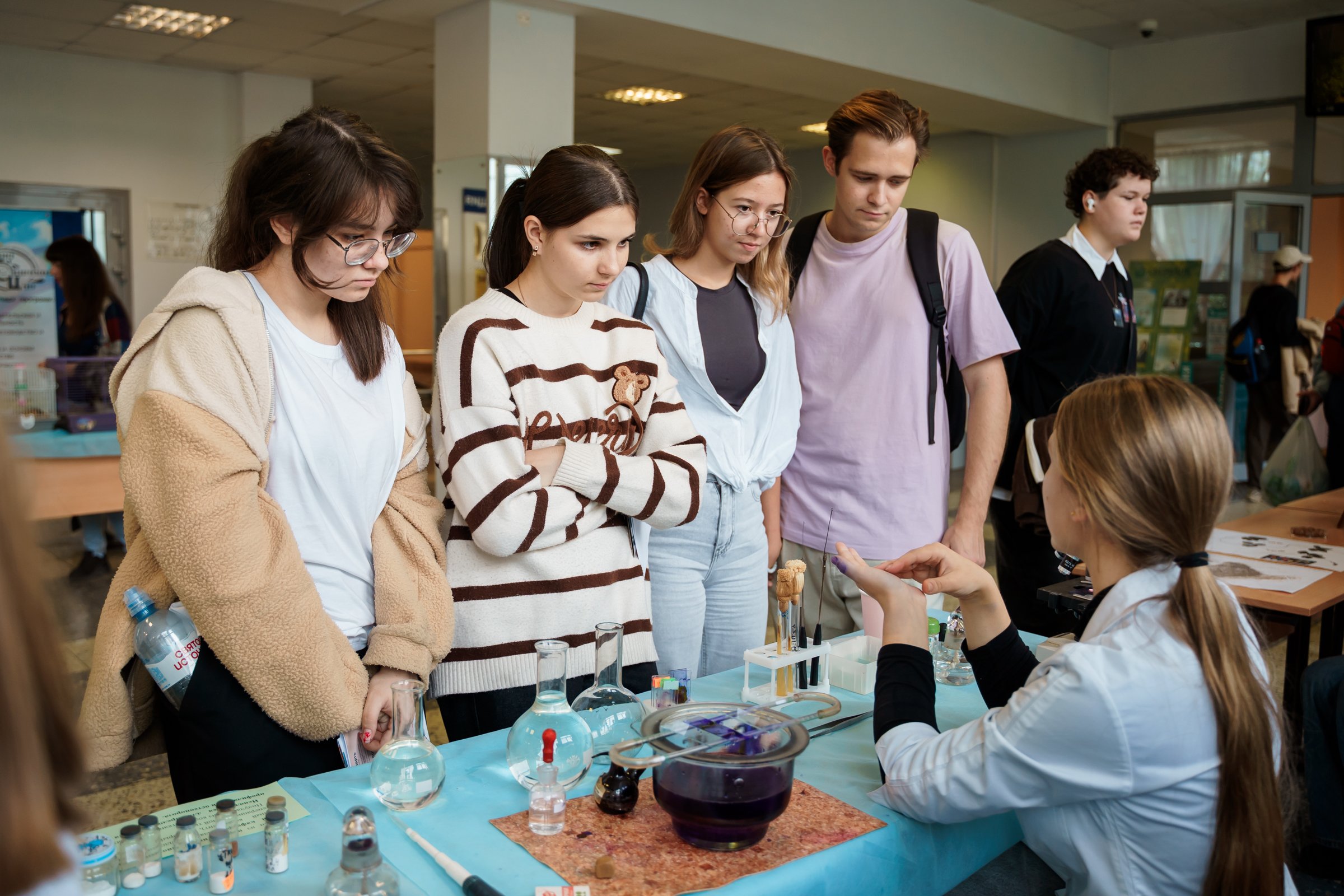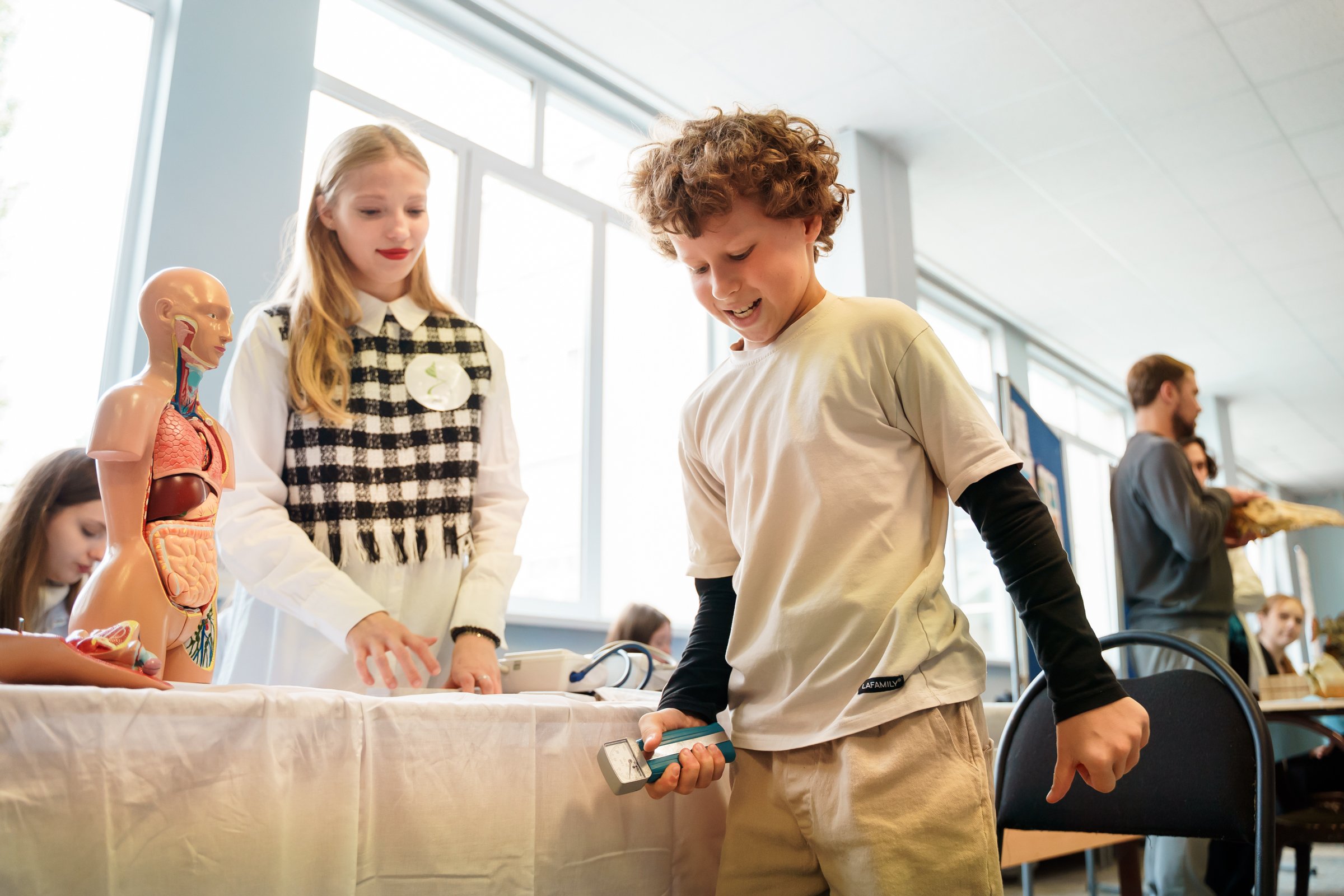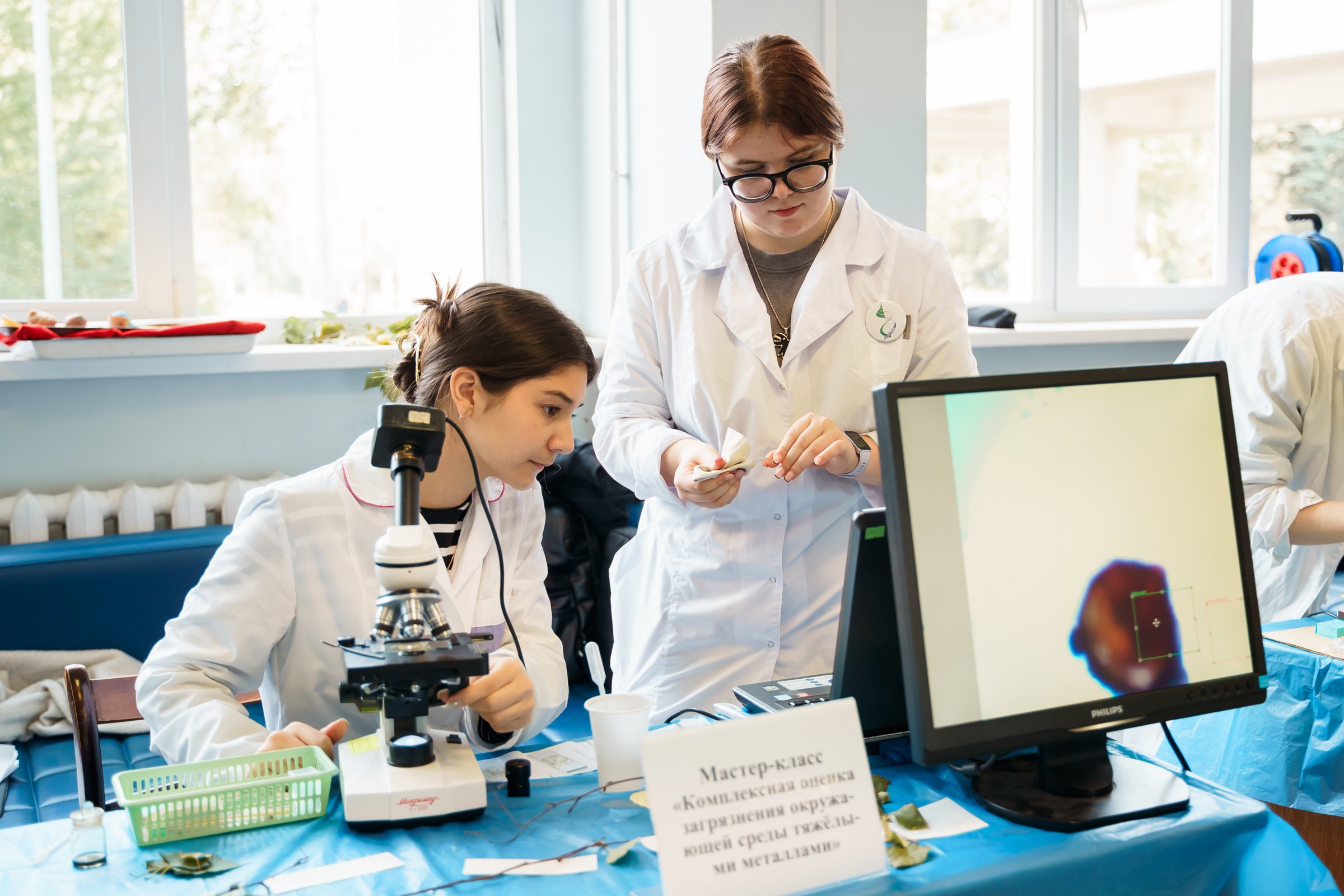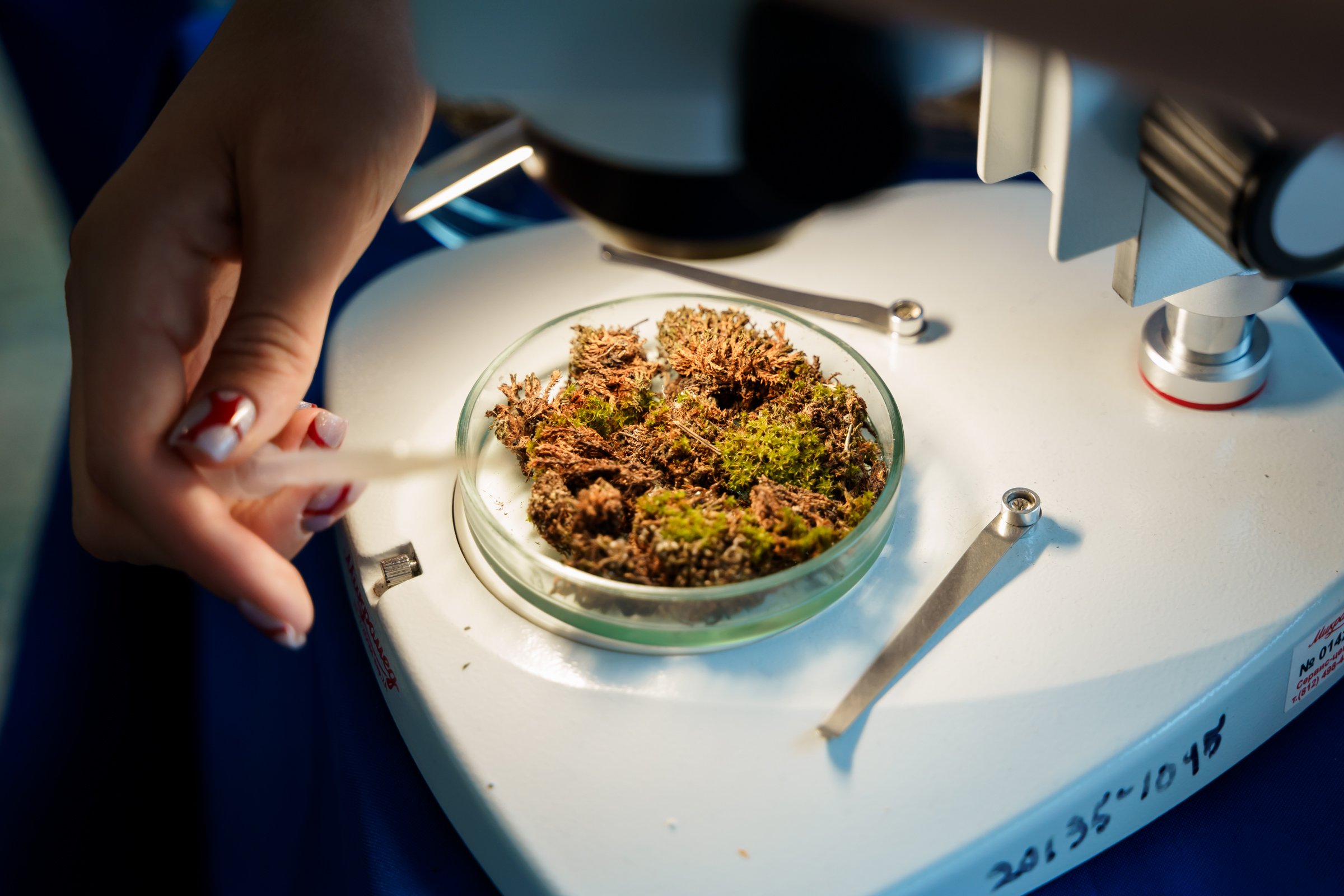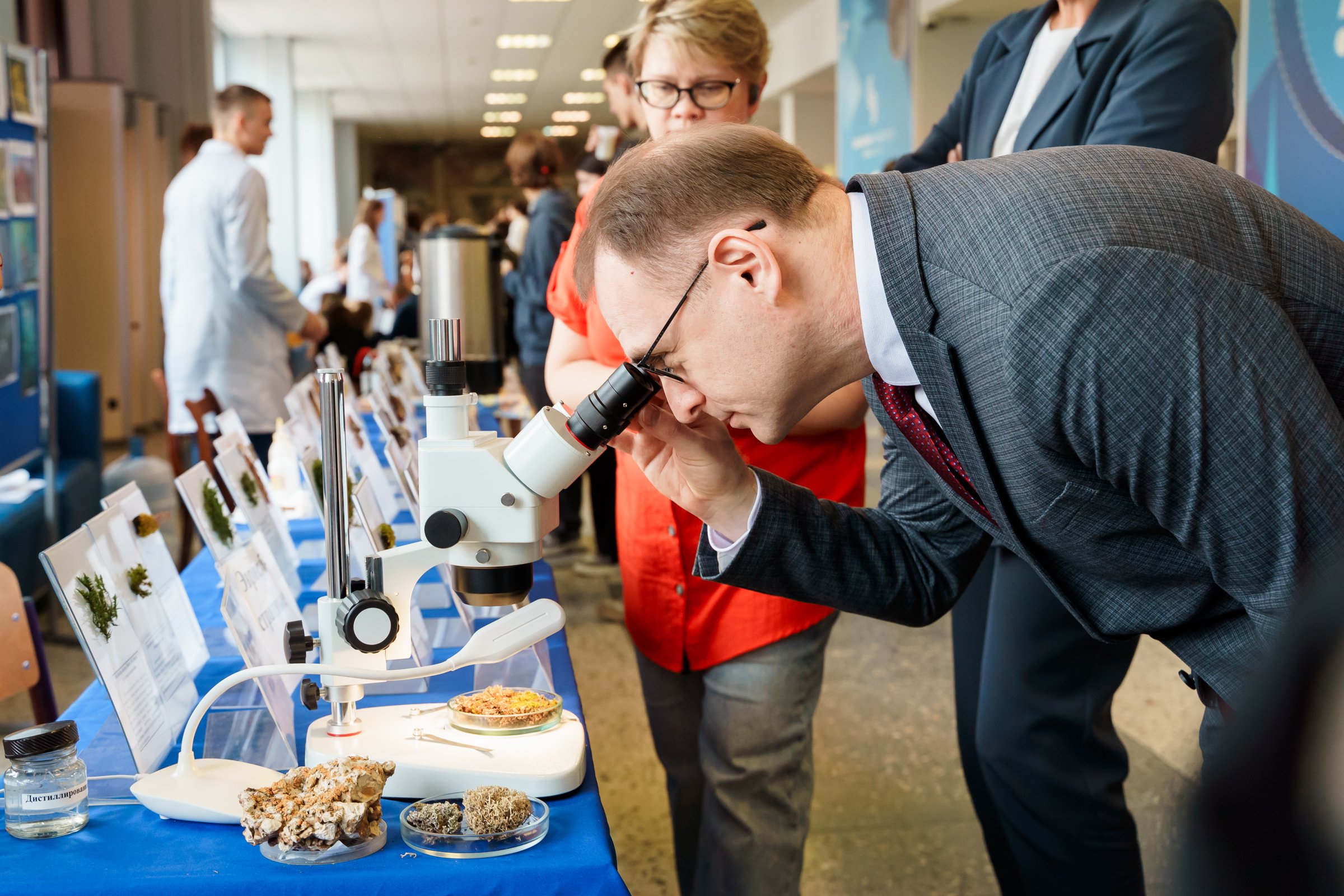Do marigolds show the way to the dead? Which mosses and lichens are treated, and which are natural dyes? Whose footprints can be found in the Zhiguli Nature Reserve? How can you identify an animal by its skull?
On September 19, schoolchildren and their teachers, students, residents, and visitors from Samara came to Samara University for Biologist’s Day! And everyone made a discovery for themselves. And more than one! Each exhibit, presented at the stands of all departments of the Faculty of Biology – “Ecology, Botany and Nature Conservation”, “Human and Animal Physiology” and “Biochemistry, Biotechnology and Bioengineering”, could be touched, and looking into the eyepiece of a microscope, you could see how the microcosm lives – the world of bacteria, mold, lichens and mosses. For example, did you know that it is very difficult to study mosses, because, firstly, try to get them in a swamp or in the tundra, and secondly, it seems that similar samples reveal their true nature under a microscope and turn out to be completely unrelated?
What does thyme and chamomile taste like? How does fermentation turn grass into tea? This was discussed at the herbal tea site. The fragrance here was divine.
And in the “Smart Butterfly House” a huge Bird-wing from the family of Sailboats was lazily flapping its wings. As it became known, now not only butterflies live in the insectarium, but also stick insects!
At the site of the Botanic Garden, students revealed to schoolchildren the secrets of plants that grow both in the garden and in the greenhouse. It turns out that bright orange-yellow marigolds come from Latin America, and there is a belief that these flowers, with their fragrance on the Day of the Dead, show the way to the spirits of their ancestors to the homes of their descendants.
Our biologists were visited by our partners: Zhiguli Nature Reserve, Samara Zoo and Samara Regional Children's Ecological and Biological Center. Therefore, the participants of the Biologist's Day saw a rare Chinese silk rooster, phlegmatic rabbits, and guinea pigs, and the royal python Murzik studied the space with interest and condescendingly allowed everyone to pet him. Opposite, a bat was being fed – there were also many curious children around.: They have just listened to lectures about how these creatures live and where in the region they can be found.
The exhibition was visited by the university's rector, Vladimir Bogatyrev, and later by the president, Academician of the Russian Academy of Sciences, Viktor Soyfer. The students demonstrated experiments to the rector at the interactive exhibition “Microbial Coalition”: using the method of the Danish physician H. Gram, they dyed bacteria a cheerful pink. By the way, such bacteria are more vulnerable to antibiotics. But if the bacterium turns blue or purple, then we are dealing with a gram-positive individual, and it will be difficult to fight it with drugs!
Meanwhile, the students, jostling, watched with fascination through the eyepiece of a microscope as a piece of steppe moss, which had just been dripped with water, “came to life”. Nearby, fluffy mold was spreading in Petri dishes. And yes, not all of it is dangerous and toxic to humans; some is beneficial, for example, mold of the Penicillium genus once saved many lives thanks to its antimicrobial properties.
The boys enthusiastically trained on the mannequin, learning the correct technique of artificial respiration. It turns out that this art has its secrets, and yes, not every suffering person can be resuscitated, first you need to check their breathing and heartbeat.
To study plants listed in the Red Book, hold fossilized specimens from the Zhiguli Nature Reserve collection, peer into the toothy mouths of fish from the Samara Region's waters, and learn how to properly preserve plants in real herbariums... The activities of Biologist's Day proved inexhaustible, just like the rich diversity of life on our planet.
Photo by Andrey Pavlov
 RU
RU  EN
EN  CN
CN  ES
ES 